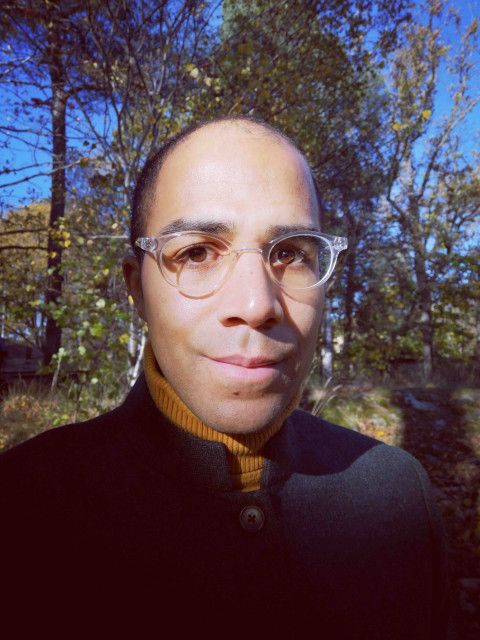The film starts with a sequence of static shots of the Chinese province of Chóngqìng: huge rocks, a waterfall, the peaks of a forest. The mysterious, 50-meter-high rocks called Qinglong (literally Azure-Dragon heart), are located in the department of Wulong, and are part of the «five dragons» founding myth of Chinese civilization. Today, it is one of UNESCO’S World Heritage sites.
The camera moves through the morning fog, then brushes over fertile land which is sculpted into terraces. A couple works in the fields. In this valley, the geological and the agricultural time of Chóngqìng are joined together, and the immensity of the rock contrasts with the green landscape. Cables reveal modern civilization. In the distance, the skyscrapers of a metropolis appear while faint city noise emerges in the sound track. A traveling shot flies over a highway which appears like a division of the two worlds: the old world, the countryside with its rocks and the new world, the city with its towers. Some of the 1.4 million refugees who were relocated by the construction of the Three Gorges Dam found shelter here.
Suddenly, close-up on a neck, resonating with the rhythm of the pulse. We see a male’s nude torso and his face, surrounded by some bees. It is the film’s main character (Shé Zuǒ Bīn). He is assisted by four men and his wife to perform a ceremony. The queen bees are now on his body and call the worker bees who will invade the body until it’s completely covered. The camera frames the beekeeper’s skin, hair, and finally one nipple which the bees forage in an almost intimate way. Their loud buzzing becomes the sound of the film. Their tingling is like a metaphor of the pulsation which the beekeeper has to master throughout his trance. The mark of a sting indicates that there is real danger. Only his absolute immobility and seeming oblivion allow him to communicate with the bees and to secure his survival. After his two-hour physical trial, he becomes a living sculpture of millions of bees from 40 beehives, an equivalent of approximately 50 kilos. The bees form the second skin of this human beehive.
Abruptly shaking off the bees, the man emerges from his static being, a critical moment that could be lethal, where he returns to life. Running away he rejoins his group. The last take is filled with a swarm of bees that hovers in front of the landscape; the bustling of the bees comparable to the interaction of small particles.
In Chinese tradition, man is a bridge between heaven and earth. Here, the human being becomes a living interface, highlighting the elements we are composed of as «co-habitant» of planet earth. These fields of tension between art and nature create a correlation between the two disciplines, where Marc Johnson puts himself onto an onto-phenomenological level in order to experience this connection of «being-in-itself» with other species. The link between nature and culture is no longer thought in the dominant verticality of mankind, but as a horizontal relationship where all beings are considered equal.
Rent this work for public screenings

